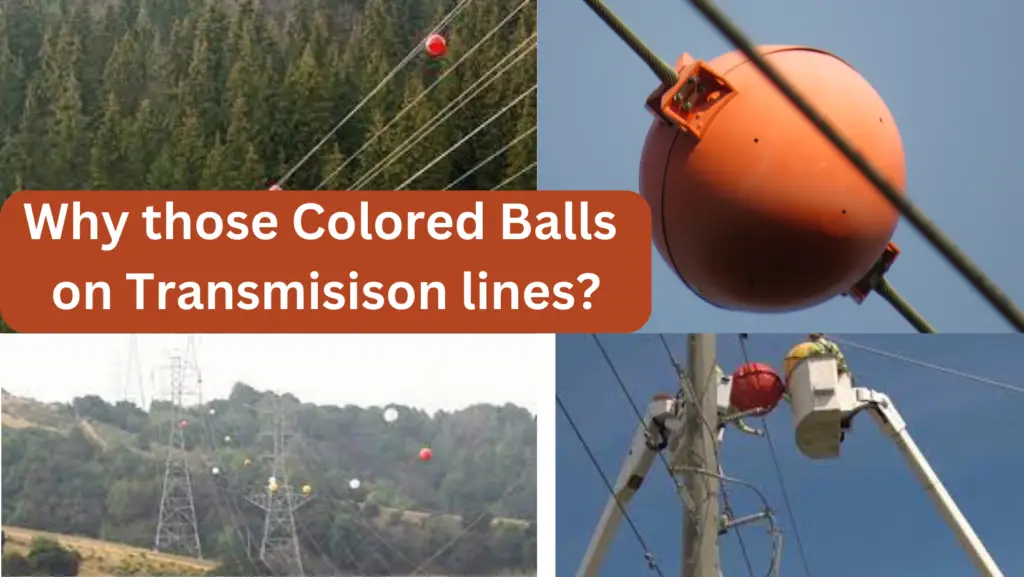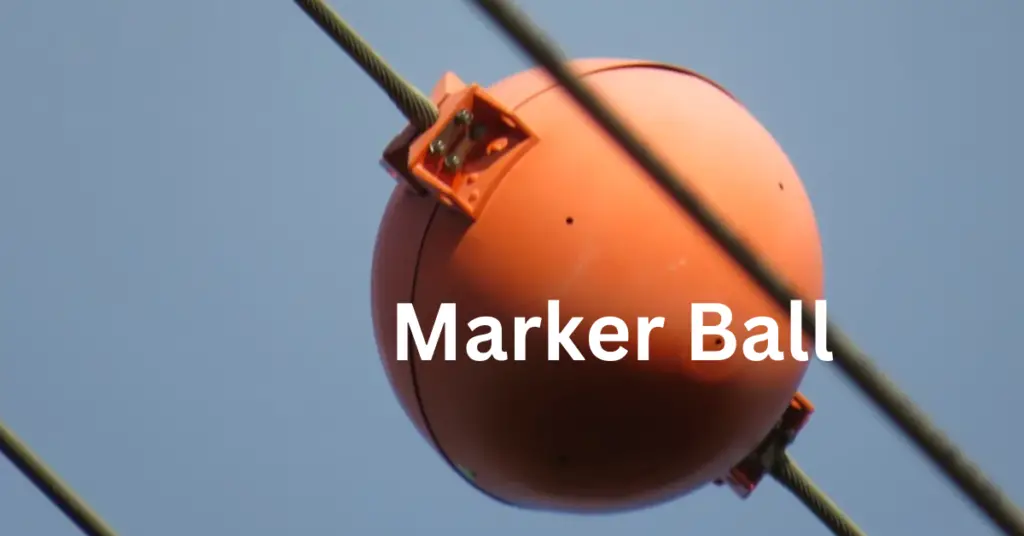Colored aerial marker balls on power lines serve a crucial purpose in ensuring safety and visibility. This article describes how these markers enhance aerial line safety and compliance.
On transmission and distribution lines, you would have seen orange, yellow, red, or white balls. What is the purpose of these balls? Why are these balls fixed on the transmission and distribution lines?

What are those Balls?
Marker balls, also known as aerial marker balls or power line marker balls, are brightly colored spherical objects attached to overhead power lines. These balls are made of durable, light materials like plastic or rubber. These materials are chosen for their ability to withstand environmental conditions and UV radiation. The balls come in various colors, such as red, orange, white, or yellow.
Marker balls come in various sizes depending on their intended use and industry standards. The size of balls is typically measured in diameter. Standard ball diameters are between 3 inches(7.6 cm) to 36 inches(91 cm). The more giant balls are used where maximum visibility is required, such as near airports or in regions with adverse weather conditions. More petite balls are used for low-visibility areas or where regulations permit smaller markers.
As per the British STD. 381C-1964-No. 557 or U.S. Engineer’s Spec. 595-121197, international danger orange color balls are specified; however, in specific conditions, the yellow, red, or white colored balls can also be used, depending on clear visibility guidelines by FFA (Federal Aviation Administration).
The diameter of the markers used for the extensive catenary wires that cross canyons, lakes, rivers, etc., should have markers not be less than 36 inches (91 cm). The diameter of balls should be 20 inches(51 cm) for less extensive catenary wires or on power lines below 50 feet (15 m) AGL and within 1,500 feet (458 m) of an airport runway end.

What Marker Balls are used for?
- Aerial Line Identification: Marker balls show the presence of overhead lines, making it easier for pilots, aircraft, and tall vehicles to see and avoid them.
- Aviation Safety: Transmission lines may cause a significant hazard to low-flying aircraft, such as helicopters and crop dusters. The pilot may not be able to see the transmission line. Marker balls mounted on the conductor improve the visibility of these lines, reducing the risk of aircraft collision. Pilots can more easily avoid flying into or near the transmission lines when they are marked with bright, obvious balls.
- Compliance with Regulations: Regulatory authorities often require the use of marker balls on high-voltage transmission lines to ensure they meet safety standards and visibility requirements. Compliance with these regulations is crucial for utilities and transmission line operators.
- Reduction of Accidents and Power Outages: By enhancing the visibility of transmission lines, marker balls help prevent accidents and collisions, which can have serious consequences, including power outages, damage to aircraft, and injury to personnel.
- Wildlife Protection: In some cases, marker balls are used to stop birds and wildlife from coming into contact with power lines, reducing the risk of electrocution and power outages.
- Maintenance and Inspection: For maintenance personnel, marker balls provide a visual reference point for locating specific transmission line portions. This can be especially helpful when conducting routine inspections, repairs, or upgrades.
- Emergency Response: In the event of an emergency, such as a natural disaster or fire, marker balls can help first responders identify the location of transmission lines quickly and safely, allowing them to take appropriate actions.
Some power line marker balls glow because of the electric field on the power lines. In some cases, flashing marker balls are used on transmission poles, towers, and power lines for clear visibility.